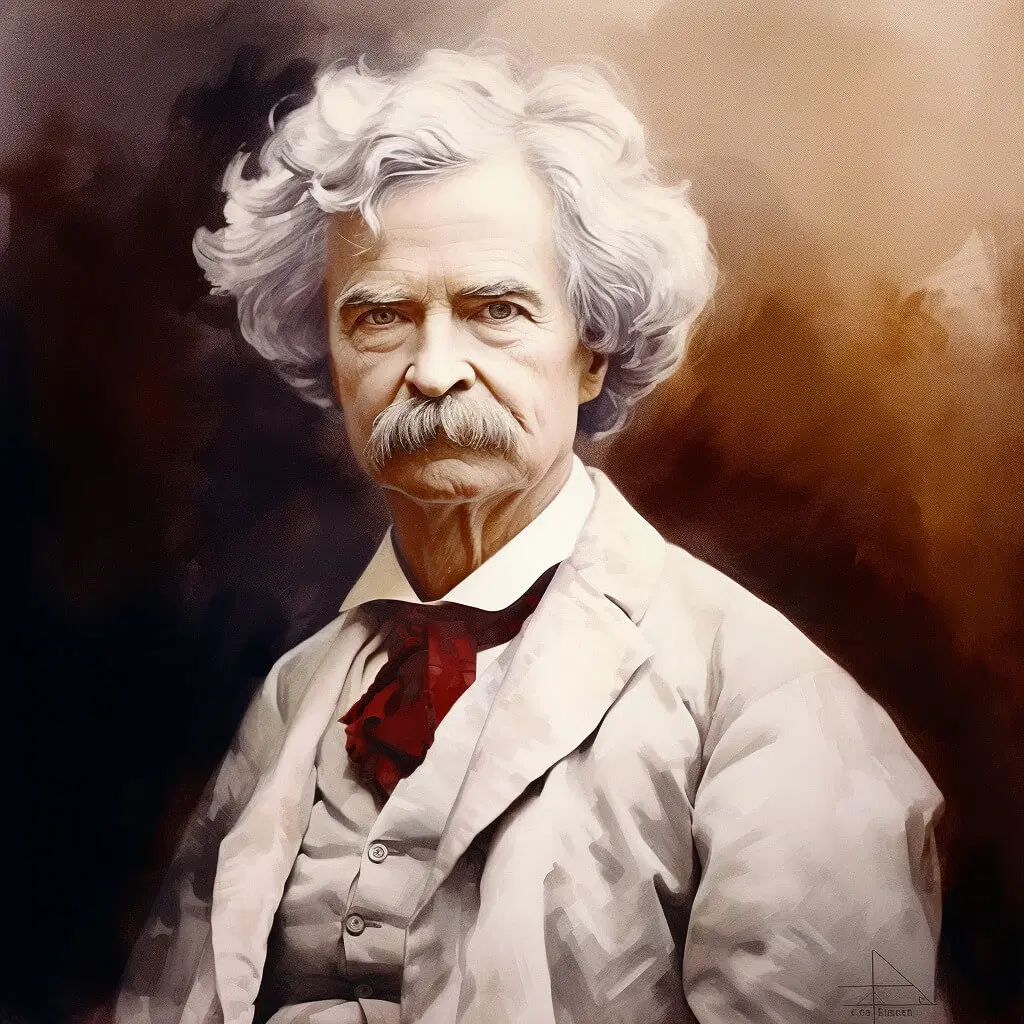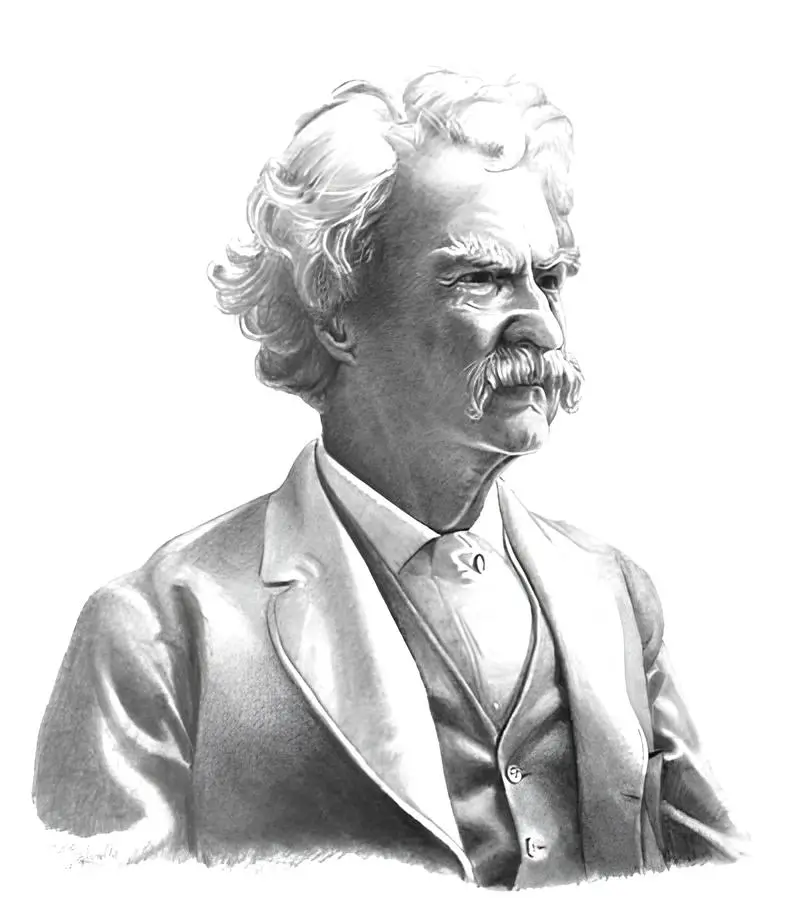Mark Twain is often celebrated as the father of American literature, a title well-earned through his masterful storytelling and profound insight into human nature. Known for his sharp wit, timeless social commentary, and unforgettable characters like Tom Sawyer and Huck Finn, Twain’s work captures the humor, complexity, and contradictions of the human experience. His stories continue to resonate with readers, offering a glimpse into America during the 19th century while exploring themes that remain relevant today. But who was the man behind the stories? Born Samuel Langhorne Clemens in 1835, Twain led a life as colorful as his writing, marked by adventure, tragedy, and a relentless curiosity about the world. This blog takes you through Twain’s life, weaving together his personal experiences, groundbreaking career, and enduring legacy, uncovering how he became one of the most iconic writers in history.

The Early Life of Samuel Clemens
Before he became Mark Twain, he was Samuel Langhorne Clemens, born on November 30, 1835, in Florida, Missouri. The sixth of seven children, Clemens spent most of his childhood in Hannibal, Missouri, a small frontier town on the banks of the Mississippi River.
Hannibal was more than just a backdrop for Twain’s formative years; it became a central stage for his famed literary works. The picturesque Mississippi River fueled his imagination and later provided the setting for classics like The Adventures of Tom Sawyer and Adventures of Huckleberry Finn. However, the idyllic river life was underscored by the harsh realities of 19th-century America, including slavery. Clemens’ father owned an enslaved person, and his uncle, who owned several individuals, introduced Sam to the spirituals and oral narratives that would deeply influence his storytelling.
At just 11 years old, Clemens faced hardship when his father died, leaving the family in financial difficulty. Young Sam left school to work as a printer’s apprentice, a decision that exposed him to the written word and set the foundation for his future career.
Young Adulthood and Early Adventures
At 18, Clemens left Hannibal to work as a typesetter in New York City and Philadelphia. However, it was his return to the Mississippi River as a licensed riverboat pilot in 1857 that profoundly impacted him. The river was both a literal and figurative current in his life, shaping his worldview and inspiring some of his most memorable writing. It was during this time that he adopted his pen name, “Mark Twain,” a term used by riverboat pilots to signify safe waters.
The outbreak of the Civil War ended his riverboat career, and after a brief and uneventful stint in a Confederate militia, Clemens headed west. His move to Nevada and later California exposed him to adventures he would immortalize in Roughing It, a semi-autobiographical account of his travels.
Career Beginnings and Rise to Fame
Clemens tested many waters before finding his calling as a writer. He failed as a silver prospector in Nevada but flourished as a journalist for the Territorial Enterprise. It was there, in Virginia City, Nevada, that “Mark Twain” debuted as a byline.
His breakout moment came in 1865 with “Jim Smiley and His Jumping Frog,” a humorous short story that was widely published and earned him national recognition. Twain’s star continued to rise as he transformed his witty observations into popular travel writing. The Innocents Abroad (1869), a collection of letters documenting his travels through Europe and the Holy Land, cemented his reputation as a humorist and social commentator.
Literary Masterpieces and Cultural Impact
By the 1870s, Twain was no longer just a writer; he was a cultural phenomenon. Settling in Hartford, Connecticut, Twain began a series of works that would become cornerstones of American literature.
- The Adventures of Tom Sawyer PDF (1876): This novel offered a nostalgic yet critical look at childhood along the Mississippi River, blending humor with a sense of morality.
- Life on the Mississippi (1883): A vivid reflection of his riverboat days, this work blends autobiography with travelogue.
- Adventures of Huckleberry Finn (1884): Hailed as one of the greatest American novels, this book tackled issues of race and identity. Its portrayal of slavery and Reconstruction America was both revolutionary and contentious.
Beyond fiction, Twain’s works like The Gilded Age (1873) and A Connecticut Yankee in King Arthur’s Court (1889) demonstrated his knack for critiquing societal flaws, including greed, class inequality, and technological upheaval.
Later Years and Financial Hardships
Despite his success, Twain’s life was far from a fairy tale. A series of poor investments, including one in a failed typesetting machine, led to financial ruin. Determined to repay his debts, he embarked on a grueling world lecture tour, charming audiences with his sharp wit and storytelling prowess.
Yet the late 19th century brought personal tragedy. Twain lost his daughter Susy to meningitis in 1896 and his wife, Livy, in 1904. These events, coupled with his financial crises, deeply affected him, and his later writings often reflected darker themes, such as human greed and the futility of life.
Even in his struggles, Twain remained prolific and influential. His anti-imperialist writings and speeches, fueled by global events like the Spanish-American War, further showcased his ability to critique societal structures.
Mark Twain’s Enduring Legacy
Mark Twain passed away on April 21, 1910, leaving behind an unparalleled literary legacy. His ability to blend humor with incisive social critique created a distinct American voice that continues to influence writers and thinkers today. Many of his observations remain as relevant now as they were during his lifetime.
“I have never let my schooling interfere with my education,” Twain once quipped, a reminder of his self-taught genius and unorthodox approach to life. That sentiment is embedded in his works, which challenge readers to question societal norms and explore new perspectives.
What Twain Means to Us Today
Twain’s dual identity as a humorist and social critic underscores the complexity of his character. At times playful and irreverent, at others somber and reflective, his works mirrored the changing landscape of a growing nation.
Twain observed firsthand the transformation of America—from slavery to emancipation, from rural towns to industrialized cities. His writing paints a portrait of a country grappling with its identity, making him not only a storyteller but an eyewitness to history.
Twain’s wit, captured in lines like “The secret of getting ahead is getting started,” reminds us that ambition and resilience are universal truths. His masterpieces captivated readers of his time and continue to do so because they ask questions that transcend generations.
A Timeless Voice for American Literature
To read Mark Twain is to step into the shoes of an empathetic observer who viewed the world with equal parts skepticism and hope. His works remain treasured for their humor, humanity, and sharp insights into society.
Literary enthusiasts, history buffs, and lifelong learners alike can find meaning in Twain’s work. If you haven’t yet, now is the perfect time to revisit his classics or explore them for the first time. Twain’s voice still has so much to teach us.





Leave a Reply